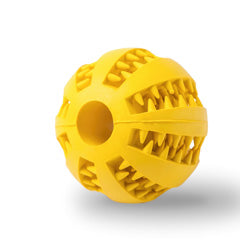If you found yourself facing an emergency situation involving your cherished four-legged friend, would you know how to help them? Having spent my life surrounded by animals, I've unfortunately encountered some of these critical situations. Hours spent giving puppies oxygen, administering medications, dressing wounds, wrapping them up in warm blankets, and rushing to the veterinarian's office with a sick dog in the car have taught me the value of being prepared for the unexpected when it comes to our pets.
Having a pet can sometimes be a source of fear and uncertainty. I've shed countless tears over our animals, so much so that my dad recently suggested I should refrain from getting more pets, citing that it's too hard on my heart. But that suggestion seems ridiculous to me. Helping animals is my passion and my purpose. Despite the emotional toll, I wouldn't trade the love and companionship they bring for anything.
You'd think that with experience, handling emergency situations would become easier, but the truth is, it doesn't. It doesn't get easier on the heart, but it can get easier to handle if you know what to look for and if you are prepared.
As pet owners, our furry companions hold a special place in our hearts. They bring joy, companionship, and endless love into our lives. Just as we would for any family member, it's crucial to be prepared for emergencies and have the knowledge and skills to provide first aid when needed. In this article, I'll cover the essential pet first aid basics that every pet owner should know to ensure the safety and well-being of their beloved animals.
Recognizing Signs of Distress:
One of the fundamental aspects of pet first aid is being able to recognize signs of distress or illness in your pet. These may include:
- Difficulty breathing
- Excessive panting
- Vomiting or diarrhea
- Lethargy or weakness, not able to walk properly.
- Bleeding or wounds
- Change in eating and drinking
- Irritated, weeping, or red eyes
- Aggressive or unusual behavior
- Whining or crying
Being able to identify these signs and symptoms early on can help you take prompt action and seek appropriate medical attention if needed.
Creating a Pet First Aid Kit:
Preparation is key in handling pet emergencies. Putting together a pet first aid kit ensures that you have essential supplies on hand when needed. Your kit should include:
- Important phone numbers (veterinarian, emergency hospital, poison control, animal control, non-emergency police)
- A copy of your pet’s medical record, including any medications your pet is receiving
- Digital thermometer to take your pet’s temperature
- Muzzle to prevent bites (DO NOT muzzle your pet if they are vomiting.)
- Spare leash and collar
- Gauze roll for wrapping wounds or muzzling an injured animal
- Clean towels for restraining, cleaning, or padding
- Non-stick bandages or strips of clean cloth to control bleeding or protect wounds
- Self-adhering, non-stick tape for bandages
- Adhesive tape for securing bandages
- Scissors with blunt ends for safely cutting bandage materials
- Disposable gloves to protect your hands
- Small flashlight for examining eyes, wounds, etc.
- Tweezers to remove small foreign objects
- Eye dropper (or large syringe without needle) to give oral treatments or flush wounds
- Sterile lubricating jelly to protect wounds/eyes
- Activated charcoal to absorb poison (Use only if instructed to do so by your veterinarian or a poison control center.)
- 3% hydrogen peroxide to induce vomiting (Always contact your veterinarian or poison control center before inducing vomiting. Do not give more than one dose unless otherwise instructed by your veterinarian. Do not use hydrogen peroxide on wounds.)
- Saline solution for cleansing wounds or flushing eyes (Saline solution sold for use with contact lenses works well for most purposes.)
- Styptic Powder, styptic powder is an anti-hemorrhagic agent that stops light wounds from bleeding. This is used if you accidentally trim your dog's nails too low, and they start bleeding.
- Your pet's medications, if applicable
Just like the first aid kit, it is very important that you keep your dog’s medication in a safe designated area. Please make sure you can grab it quickly if you have an emergency situation.
Basic First Aid Techniques:
Now that you know what signs and symptoms to look for and you have your first aid kit ready to go, it's time to move to the next step.
Basic first aid techniques can range from basic wound care, muzzling, choking, burns, toxins, CPR and even more. It is essential that you familiarize yourself with basic first aid techniques for pets, including:
- Wound care: Clean wounds with antiseptic solution and apply pressure to stop bleeding. Use bandages or gauze pads to cover the wound and prevent contamination.
- CPR (Cardiopulmonary Resuscitation): Learn how to perform CPR on pets, including chest compressions and rescue breathing. This can be a lifesaving skill in emergency situations.
- Muzzling and handling: Safely restrain and muzzle your pet to prevent further injury or aggression when administering first aid.
- Choking relief: Know how to perform the Heimlich maneuver on pets if they are choking on an object.
Knowing When to Seek Veterinary Care:
While pet first aid skills are valuable, they are not a substitute for professional veterinary care. It's essential to know when to seek medical attention for your pet. If your pet is seriously injured, showing signs of severe distress, or if you're unsure of how to proceed, contact your veterinarian immediately or seek emergency veterinary care. It is recommended, depending on severity, that you contact your vet during or after an emergency situation.
Helpful Tips:
Here are a few helpful tips to make life a little easier:
- Keep your face away from your dog's mouth. If they are in an emergency situation, they are probably scared and might not be acting like themselves.
- When traveling with your pets, consider bringing a condensed version of your first aid kit.
- If you are having someone watch your furry friend while you are away, always make sure you leave detailed instructions and information so that they can help your pet while you are away.
- If you want to buy a first aid kit for your pet, instead of making one yourself, they offer many options online. Just search for ‘commercial pet first aid kit’.
- From time to time, make sure you go through your first aid kit to make sure the items are still valid and in their proper place.
- Be familiar with the national animal poison control hotline (888-426-4235) and a 24-hour emergency veterinary hospital in the area where you will be visiting.
- The American Red Cross has an app and online class to help pet owners know what to do in an emergency until veterinary care is available.
- The Pet First Aid app can be downloaded by texting ‘GETPET’ to 90999, by going to redcross.org/apps, or by searching for ‘American Red Cross’ in app stores.
As pet parents, we try our best to protect our fur babies the best we can. However, just like humans, there will be times that we unfortunately run into emergency situations. Being prepared to handle pet emergencies is an essential responsibility for every pet owner. By learning pet first aid basics, creating a pet first aid kit, and knowing when to seek veterinary care, you can be better equipped to handle unexpected situations and provide the best possible care for your furry friend. Your pet's health and safety are in your hands, so take the time to educate yourself and be prepared for any situation that may arise. Remember, stay calm, breathe, and know that you got this.
**Throughout this blog I have given basic information on first aid techniques. Our next blog will be more in depth and offer more insight on the techniques used to help your furbaby.**
References:
https://www.avma.org/resources-tools/pet-owners/emergencycare/first-aid-tips-pet-owners













